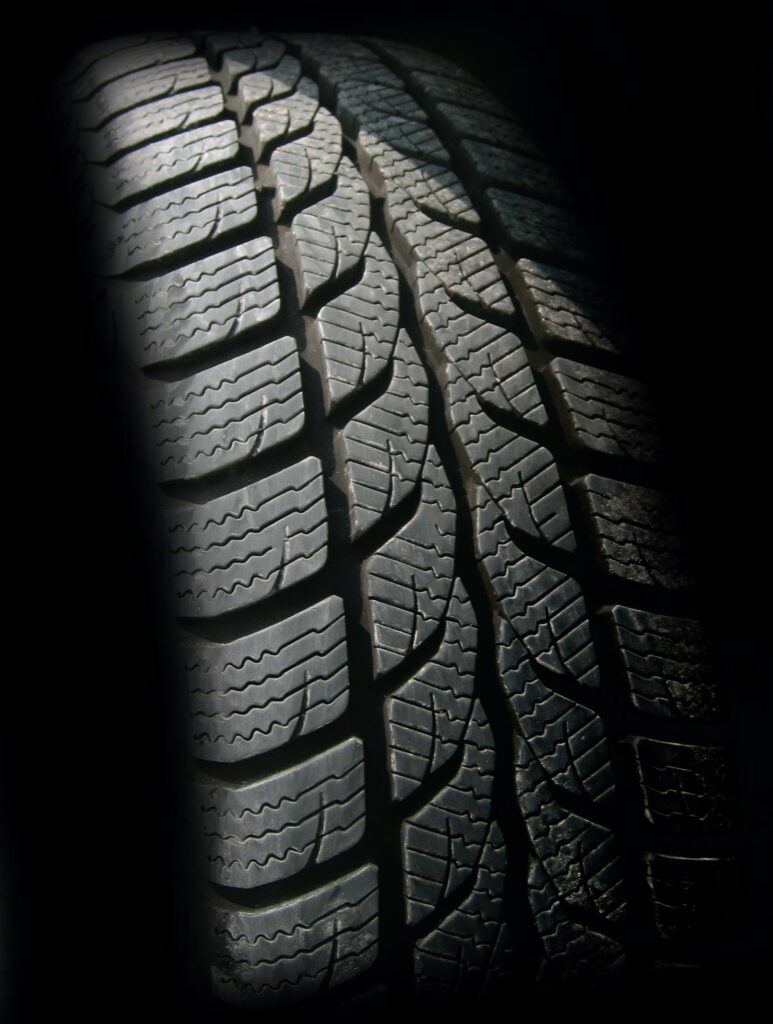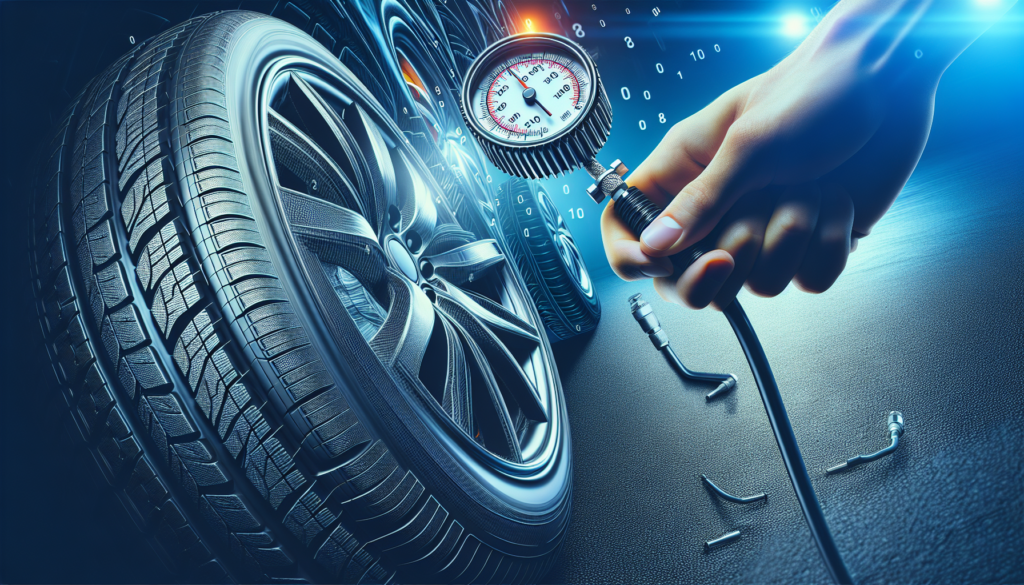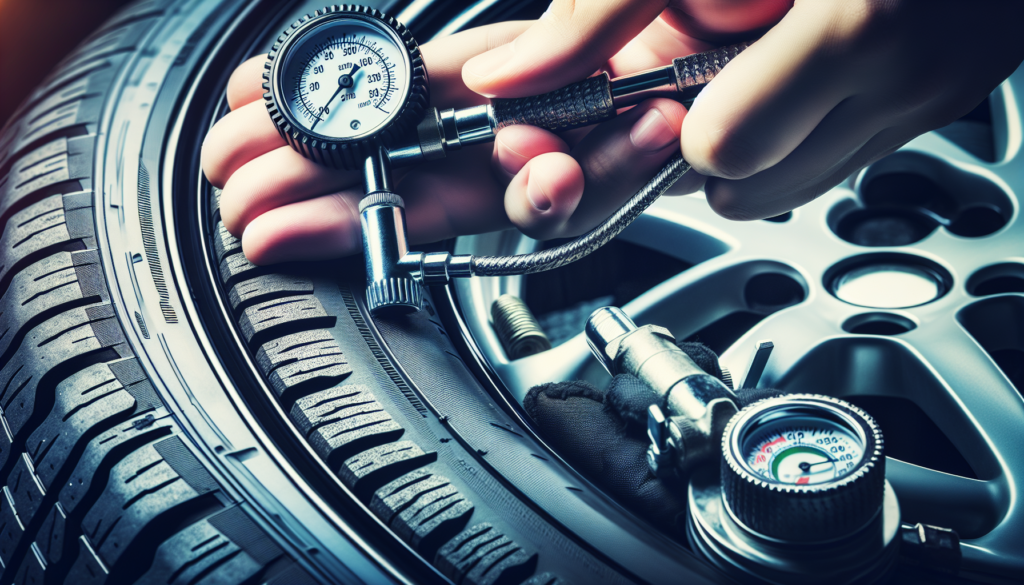Imagine a scenario where you’re cruising down the road, feeling the wind in your hair and the music blasting from your speakers. But have you ever wondered what would happen if your tire pressures were not uniform? In this article, we will explore the potential consequences of driving with different tire pressures. From compromised safety to decreased fuel efficiency, understanding the impacts of improper tire inflation is essential for all drivers. So, let’s buckle up and uncover the importance of maintaining balanced tire pressures.

Increased Fuel Consumption
Under-Inflated Tires
Driving with under-inflated tires can have a significant impact on your fuel consumption. When your tires are not properly inflated, it causes increased rolling resistance, which means your engine has to work harder to move your vehicle forward. This leads to more fuel being burned and ultimately results in decreased fuel efficiency. According to studies, under-inflated tires can decrease your gas mileage by up to 3%. That might not sound like much, but it can add up over time and result in unnecessary trips to the gas station.
Over-Inflated Tires
On the flip side, over-inflated tires can also lead to increased fuel consumption. When your tires are over-inflated, they become excessively rigid and have less contact with the road surface. This reduces traction and causes your vehicle to bounce around more, resulting in increased fuel consumption. Similar to under-inflated tires, over-inflated tires can decrease your gas mileage by up to 3%. It’s important to find the right tire pressure for your vehicle to ensure optimal fuel efficiency and save money at the pump.
Uneven Tire Wear
Under-Inflated Tires
One of the consequences of driving with under-inflated tires is uneven tire wear. When your tires are not properly inflated, the weight of your vehicle is not evenly distributed across the tread, causing certain areas of the tire to wear out faster than others. This can lead to irregular tire wear patterns, such as cupping or feathering, which can affect the overall performance and lifespan of your tires. Uneven tire wear not only compromises your safety on the road but also requires you to replace your tires more frequently, resulting in additional expenses.
Over-Inflated Tires
Similarly, over-inflated tires can also cause uneven tire wear. When your tires are over-inflated, the center of the tread bears most of the weight, causing it to wear out faster compared to the outer edges. This results in a worn-out center strip on your tires, which can negatively impact traction and handling. Additionally, over-inflated tires are more susceptible to damage from road hazards, such as potholes and debris. It’s essential to maintain the proper tire pressure to ensure even tire wear and prolong the life of your tires.
Reduced Traction and Handling
Under-Inflated Tires
Driving with under-inflated tires can significantly impact your vehicle’s traction and handling. When your tires are not properly inflated, the contact area between the tire and the road decreases. This reduces the grip, especially during wet or snowy conditions, making it harder for your vehicle to maintain traction and control. It can also increase the risk of skidding or hydroplaning, putting you and your passengers in danger. Properly inflated tires, on the other hand, provide better traction and handling, allowing you to drive safely in a variety of weather conditions.
Over-Inflated Tires
Over-inflated tires can also hinder your vehicle’s traction and handling capabilities. When your tires are excessively inflated, they become rigid and have less surface area in contact with the road. This diminishes the tire’s ability to grip the road, especially during turns or emergency maneuvers, and can lead to a loss of control. It’s crucial to maintain the recommended tire pressure to ensure optimal traction and handling, which ultimately contributes to your safety on the road.
Risk of Tire Blowouts
Under-Inflated Tires
One of the most severe consequences of driving with under-inflated tires is the increased risk of tire blowouts. When your tires are under-inflated, they flex more as they rotate, generating excess heat. This heat buildup weakens the tire’s structure and can eventually lead to a sudden and catastrophic blowout. Tire blowouts can be extremely dangerous, causing loss of control and potential accidents. By regularly checking and maintaining the proper tire pressure, you can mitigate the risk of tire blowouts and ensure a safer driving experience.
Over-Inflated Tires
Contrary to popular belief, over-inflated tires can also increase the risk of tire blowouts. When your tires are over-inflated, the excessive pressure puts additional stress on the tire’s sidewalls, making them more susceptible to failure. Over time, this increased strain can lead to cracks or ruptures in the tire, which can result in a blowout while driving. It’s crucial to strike the right balance with tire pressure to avoid the potential hazards associated with both under-inflated and over-inflated tires.

Impaired Braking Performance
Under-Inflated Tires
Driving with under-inflated tires can significantly impair your vehicle’s braking performance. When your tires are not properly inflated, they require more distance to come to a complete stop. This is because the increased rolling resistance makes it harder for your brakes to effectively grip the road surface. In emergency situations where quick braking is necessary, under-inflated tires may not provide sufficient stopping power, potentially leading to accidents. Maintaining the correct tire pressure ensures that your brakes can perform optimally, allowing for safer and more controlled braking.
Over-Inflated Tires
Over-inflated tires can also negatively impact your vehicle’s braking performance. When your tires are excessively inflated, the reduced surface area in contact with the road leads to decreased traction, making it harder for your brakes to engage effectively. This can result in longer braking distances and compromised stopping power. Adjusting your tire pressure to the recommended level ensures that your brakes can efficiently slow down and stop your vehicle when needed, improving your safety on the road.
Increased Risk of Hydroplaning
Under-Inflated Tires
Driving with under-inflated tires significantly increases the risk of hydroplaning. Hydroplaning occurs when a layer of water accumulates between the tires and the road surface, causing a loss of traction. When your tires are not properly inflated, the grooves and channels in the tread cannot effectively disperse water, leading to a higher likelihood of hydroplaning. This can result in a loss of control and potentially cause accidents. By regularly checking your tire pressure and keeping it at the recommended level, you can minimize the risk of hydroplaning and drive more safely in wet conditions.
Over-Inflated Tires
While less common, over-inflated tires can also contribute to the risk of hydroplaning. When your tires are excessively inflated, they have less contact with the road surface, reducing their ability to channel water away. This decreases their grip on wet roads, making hydroplaning more likely. It’s essential to find the right tire pressure balance to ensure optimal traction and minimize the risk of hydroplaning, especially during rainy or wet weather conditions.

Uneven Handling and Steering
Under-Inflated Tires
Under-inflated tires can cause uneven handling and steering response. When your tires are not properly inflated, it affects the overall stability and responsiveness of your vehicle. You may experience a sluggish or unresponsive steering feel, making it harder to control your vehicle accurately. Additionally, under-inflated tires can lead to a noticeable pull to one side, causing uneven wear on your tires and potentially affecting wheel alignment. By maintaining the recommended tire pressure, you can enjoy smooth and predictable handling, allowing for safer and more enjoyable driving experience.
Over-Inflated Tires
Similar to under-inflated tires, over-inflated tires can also result in uneven handling and steering. When your tires are excessively inflated, they become stiff and reduce the tire’s ability to absorb bumps or road imperfections. This can make your vehicle feel harsh and transmit more vibrations to the steering wheel. Over time, this can lead to a less comfortable and less controlled driving experience. It’s vital to adjust your tire pressure to the manufacturer’s recommendations to ensure optimal handling and steering response.
Reduced Tire Life
Under-Inflated Tires
Driving with under-inflated tires can significantly reduce their overall lifespan. When your tires are not properly inflated, they experience uneven wear, as certain areas bear more weight and load. This causes the tire to wear out faster and can lead to premature tire failure. Additionally, under-inflated tires generate excess heat due to increased flexing, further accelerating the wear process. Regularly checking and maintaining the appropriate tire pressure helps to distribute the load evenly, ensuring a longer and more reliable tire life.
Over-Inflated Tires
Over-inflated tires also contribute to reduced tire life. When your tires are excessively inflated, the center of the tread wears out faster than the outer edges, compromising the overall tread life. This uneven wear can lead to a decreased tire lifespan and can be costly in terms of frequent tire replacements. By keeping your tires properly inflated, you can maximize their longevity and save money in the long run.

Increased Road Noise
Under-Inflated Tires
Driving with under-inflated tires can result in increased road noise inside your vehicle. When your tires are not properly inflated, the uneven contact with the road surface leads to more vibration and noise. This can make your driving experience noisier and less comfortable. Additionally, under-inflated tires may cause your vehicle’s suspension system to work harder, resulting in additional noises and reduced ride quality. Maintaining the correct tire pressure improves the overall driving comfort and reduces road noise.
Over-Inflated Tires
Similarly, over-inflated tires can also contribute to increased road noise. When your tires are excessively inflated, they become stiff and transmit more road vibrations and noise into the cabin of your vehicle. This can make your driving experience less pleasant and lead to a noisier interior. It’s important to find the right tire pressure balance to minimize road noise and enhance your overall comfort while driving.
Impact on Environmental Pollution
Under-Inflated Tires
Driving with under-inflated tires has a negative impact on environmental pollution. When your tires are not properly inflated, they increase rolling resistance, which requires more engine power and burns more fuel. This results in higher carbon dioxide (CO2) emissions, contributing to greenhouse gas emissions and climate change. Additionally, under-inflated tires wear out faster, leading to more frequent tire replacements and waste generation. By taking the time to regularly check and maintain the correct tire pressure, you can reduce your carbon footprint and contribute to a cleaner and greener environment.
Over-Inflated Tires
Over-inflated tires also play a role in environmental pollution. When your tires are excessively inflated, they contribute to increased fuel consumption, which in turn leads to higher CO2 emissions. The unnecessary burning of more fuel not only harms the environment but also wastes precious natural resources. By ensuring your tires are properly inflated, you can minimize your impact on the environment and promote sustainable driving practices.
In conclusion, driving with different tire pressures can have significant consequences on various aspects of your vehicle’s performance, safety, and the environment. Whether it’s under-inflated or over-inflated tires, both scenarios pose risks and complications that can be avoided by maintaining the recommended tire pressure. From increased fuel consumption and reduced traction to uneven tire wear and compromised handling, neglecting proper tire inflation can lead to unnecessary expenses, accidents, and environmental pollution. Taking the time to regularly check and adjust your tire pressure will not only improve your driving experience but also contribute to safer roads and a healthier planet. So remember, keeping your tires properly inflated is not just good for your vehicle but also for you and the world around you.


